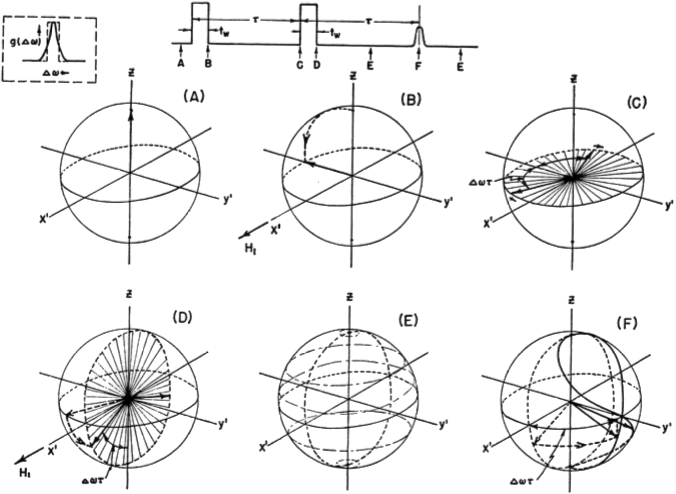Principles of Neuroimaging B - 2014: Difference between revisions
No edit summary |
(mscohen) |
||
| Line 15: | Line 15: | ||
=Week 3 - Swine flu and MRI= | =Week 3 - Swine flu and MRI= | ||
==''Monday 1/20/14== | ==''Monday 1/20/14''== | ||
===Class canceled due to flu. Sorry=== | ===Class canceled due to flu. Sorry=== | ||
==''Wednesday 1/22/14== | ==''Wednesday 1/22/14''== | ||
Magnetic Resonance Imaging (MRI) is probably the most influential and most felxible current means of imaging the human brain. It features a vast number of separable contrast mechanisms, and a near ideal combination of non-invasiveness, safety, resolution and metric accuracy. However, it is extraordinarily expensive and has limited temporal resolution, especially for functional studies | Magnetic Resonance Imaging (MRI) is probably the most influential and most felxible current means of imaging the human brain. It features a vast number of separable contrast mechanisms, and a near ideal combination of non-invasiveness, safety, resolution and metric accuracy. However, it is extraordinarily expensive and has limited temporal resolution, especially for functional studies | ||
| Line 70: | Line 70: | ||
=Week 8 Transcranial Magnetostimulation and PET applications= | =Week 8 Transcranial Magnetostimulation and PET applications= | ||
==''Monday 2/24/14 | ==''Monday 2/24/14''== | ||
===TMS. ''Speaker'': [http://faculty.bri.ucla.edu/institution/personnel?personnel_id=121107 Allan Wu]=== | ===TMS. ''Speaker'': [http://faculty.bri.ucla.edu/institution/personnel?personnel_id=121107 Allan Wu]=== | ||
'Required Readings'' | 'Required Readings'' | ||
| Line 81: | Line 81: | ||
:*[http://onlinelibrary.wiley.com/doi/10.1002/mrm.1910140226/pdf MS Cohen, RM Weisskoff, RR Rzedzian and HL Kantor, “Sensory stimulation by time-varying magnetic fields.” Magnetic Resonance in Medicine, 14(2): p. 409-414. 1990] | :*[http://onlinelibrary.wiley.com/doi/10.1002/mrm.1910140226/pdf MS Cohen, RM Weisskoff, RR Rzedzian and HL Kantor, “Sensory stimulation by time-varying magnetic fields.” Magnetic Resonance in Medicine, 14(2): p. 409-414. 1990] | ||
==Wednesday 2/26/ | ==Wednesday 2/26/1.== | ||
===PET applications. ''Speaker'': [http://www.semel.ucla.edu/profile/edythe-london Edythe London]=== | ===PET applications. ''Speaker'': [http://www.semel.ucla.edu/profile/edythe-london Edythe London]=== | ||
| Line 89: | Line 89: | ||
==''Monday 3/3/14'' - Class canceled== | ==''Monday 3/3/14'' - Class canceled== | ||
==''Wednesday 3/5/14''== | ==''Wednesday 3/5/14''== | ||
===Spectroscopy. | ===Spectroscopy. ''Speaker:'' Albert Thomas - UCLA Radiology.=== | ||
Handouts distributed in class | Handouts distributed in class | ||
=Week 10 - Compressed sensing and finals= | =Week 10 - Compressed sensing and finals= | ||
==''Monday 3/10/14''== | ==''Monday 3/10/14''== | ||
===Compressed Sensing. | ===Compressed Sensing. ''Speaker:'' Ming Yan - UCLA Applied Mathematics=== | ||
:*[[IntroductionToCS.pdf | Ming Yan's slides on compressive sensing]] | :*[[IntroductionToCS.pdf | Ming Yan's slides on compressive sensing]] | ||
Revision as of 16:37, 12 March 2014
Principles of Neuroimaging B, Winter, 2012 - Class Schedule and Syllabus
Week 1 - A late start
Monday 1/6/14, Wednesday 1/8/14 - No Class
Week 2 - in class lab project
Monday 1/13/14, Wednesday 1/15/14
- EKG Circuit Build. Speaker: Cameron Rodriguez
Week 3 - Swine flu and MRI
Monday 1/20/14
Class canceled due to flu. Sorry
Wednesday 1/22/14
Magnetic Resonance Imaging (MRI) is probably the most influential and most felxible current means of imaging the human brain. It features a vast number of separable contrast mechanisms, and a near ideal combination of non-invasiveness, safety, resolution and metric accuracy. However, it is extraordinarily expensive and has limited temporal resolution, especially for functional studies
OUTLINE Required Readings
- MRI Slides
- These notes by Joseph Hornak are highly professional and complete coverage of MRI.
- eMRI is another excellent online MRI learning resource
- Erwin Hahn - Spin Echoes: Essential reading for the MRI community
 above: Figure 1 from Hahn, 1950
above: Figure 1 from Hahn, 1950
Suggested Further Reading
Week 4 - Magnetic Resonance Imaging
Monday 1/27/1 - MRI
-MRI I Speaker: Cohen
Required Readings
Wednesday 1/29/14 - MRI II. Speaker: Cohen
Week 5 MRI and multimodal imaging
Monday 2/3/14
MRI (fMRI) III. Speaker: Cohen
Wednesday 2/5/14
Multimodal imaging. Speaker: Cohen
Week 6 Diffusion and PET
Monday 2/10/14
Diffusion imaging. Speaker: Ben Ellingson
Required Readings Slides should be up soon. Suggested Further Reading
- Sadly, the library does not have a subscription for the journals below (Mark has copies on reserve in his office):
Wednesday 2/12/14
Positron Emission Tomography. Speaker: Magnus Dahlboun
Handouts distributed in class.
Week 7
Monday 2/17/14 Presidents Day - No class
Wednesday 2/19/14
Week 8 Transcranial Magnetostimulation and PET applications
Monday 2/24/14
TMS. Speaker: Allan Wu
'Required Readings
Suggested Further Reading Once upon a time we demonstrated that this sort of magnetic stimulation can take place in the MRI machines:
Wednesday 2/26/1.
PET applications. Speaker: Edythe London
Week 9 - Spectroscopy
Monday 3/3/14 - Class canceled
Wednesday 3/5/14
Spectroscopy. Speaker: Albert Thomas - UCLA Radiology.
Handouts distributed in class
Week 10 - Compressed sensing and finals
Monday 3/10/14
Compressed Sensing. Speaker: Ming Yan - UCLA Applied Mathematics
To access the slides from the course web site listed on his handout, The username is "caame654", and password is "dense".
Suggested Further Reading
- READING